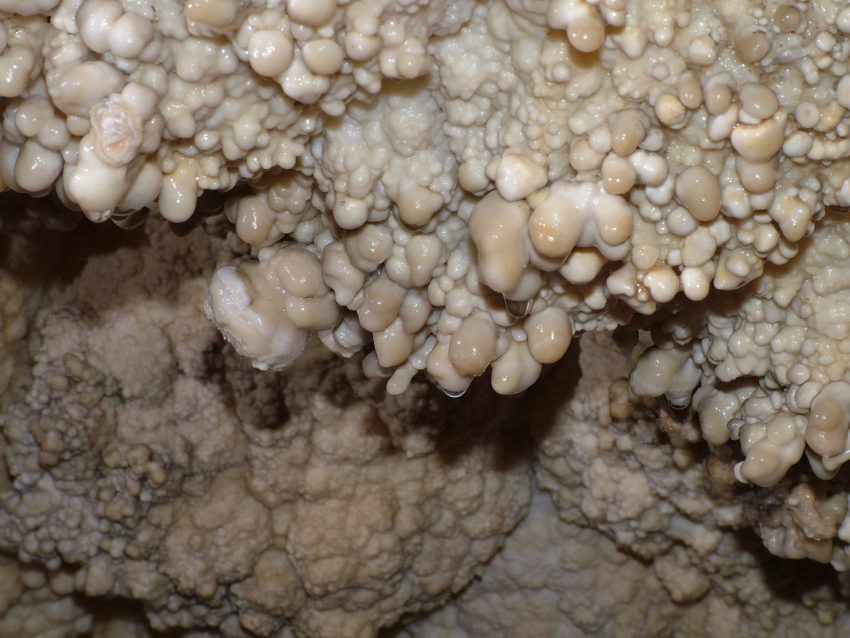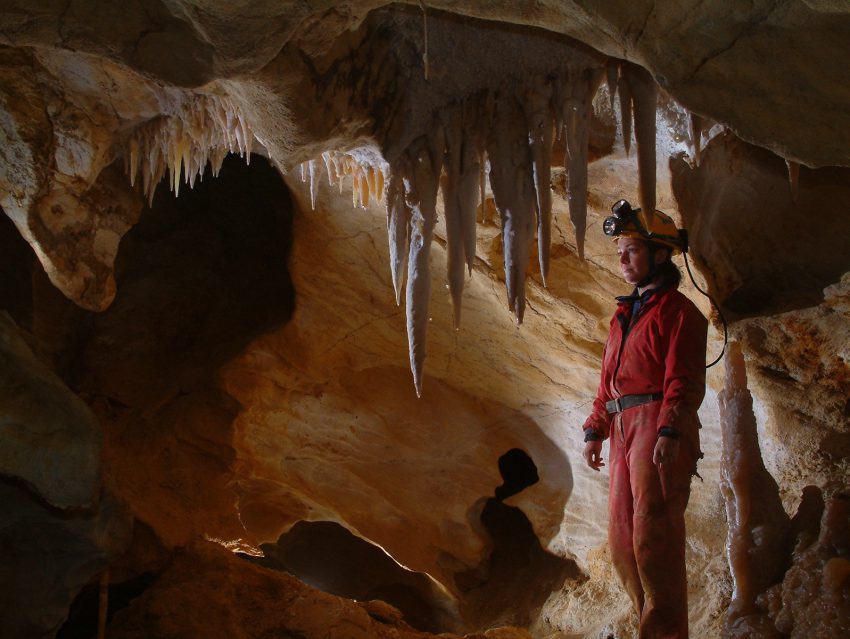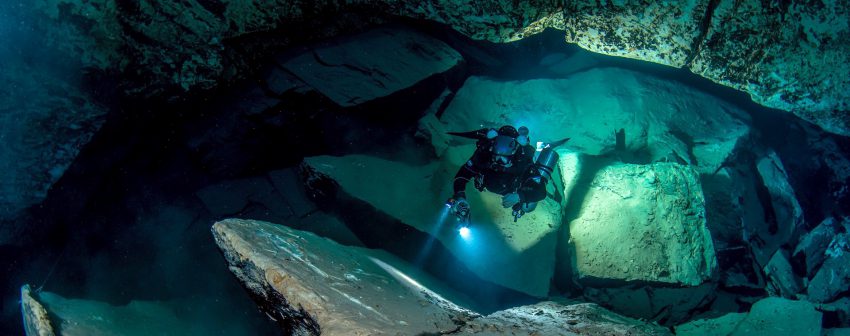Besides ruin bars and baths, Budapest is also the capital city of underground wonders. It’s the only capital in the world which has caves of significant size underneath its streets, all of them created by the arduous works of thermal springs over millions of years. In this month’s Budapest Uncovered, we’ll walk you through some of the most well-known caverns of the Hungarian capital, and the country’s largest cellar system.
Szemlő-hegyi Cave
The city’s most cave-riddled area is found in the Buda Hills, containing close to 200 naturally formed subterranean tunnels. Unfortunately, unless you have professional caving qualifications, you can only experience a handful of these dark and eerie chambers. Discovered in 1930 as a result of quarrying operations, the Szemlő-hegy cave system was carved out of the host rock of Buda Hills through a time period of 3,5 million years, thanks to the diligent work of Buda’s famous thermal waters. Situated close to Óbuda’s Kolosy tér and accessible for people with disabilities since 2011, the Szemlő-hegy cave awaits visitors year-round with a 100% humidity and a constant temperature of 12 degrees Celsius. Currently explored in a length of 2200 meters (about 250 of which can be viewed by the visitors), the cave’s dust-free air has a curative effect on those suffering from respiratory problems, hence why the tunnels give home to speleotherapy sessions since 1990. The cave offers a variety of spectacular forms, and is richly ornamented with mineral precipitations, including pisolite and gypsum crystals, as well as the pure white formations of Aragonite minerals.

Pál-völgyi Cave
Not far from Szemlő-hegyi cave you’ll find another popular underground system, open to visitors from Tuesday to Sunday. With a length of more than 19 kilometres, the dripstone-rich Pál-völgyi cave is the longest cave in Budapest, and the third longest in the country. One of the city’s most important natural treasures, the Pál-völgyi cave is famous for its elephant- and crocodile-shaped stalagmite formations, and its world-class acoustics, which you can hear for yourself in the cave’s so-called Theatre Hall. The pleasant, 500 meters long hiking trip will take you about one hour, although you might want to stay a bit longer and enjoy the 11 degrees Celsius cold air, before returning above ground to the sweaty realities of the summer.
Cave Church
Located right next to Gellért Baths, and marked by a cross on top of its entrance, the Cave Church was inspired by similar rock constructions found in Lourdes, France, and built by Pauline monks as a chapel and monastery in the 1920s and 1930s. Formed by the waves of the Pannon sea and the thermal waters seeping up from below, the cave was inhabited by a h

ermit called Ivan in the Middle Ages, who is believed to have used the water of the nearby muddy lake to heal the sick. Composed of many rooms, the labyrinthine church is also a popular tourist attraction, with beautiful ornaments and a truly unique atmosphere. The air between the church’s ancient walls has a constant temperature of 20 degrees Celsius, providing shelter for everyone from the scorching heat.

Molnár János Cave
Its entrance facing the building of Lukács Baths, the Molnár János Cave (named after the pharmacist who first analyzed its waters) is a thermokarstic water-filled cave system that stretches out to more than 5 kilometres below the surface. It is one of the world’s biggest underwater cave, with tunnels crisscrossing between 150 and 250 metres deep underground, filled by the Molnár János spring (or springs, as divers have found four different water sources as of yet). The water’s temperature fluctuates between 20 and 23 degrees Celsius, and is used daily in the pools of the neighbouring bathing complex. The spring also feeds a small thermal water pond, situated just a couple of meters away from the cave mouth, already known and used by the ancient Romans (as shown by the numerous Roman artifacts found by divers over the years). Sadly, you can only explore the cave if you have a professional diving certificate.

Kőbánya Cellar System
The first documentation of the 30 kilometres long Kőbánya cellar system date back to the 13th century, the time of King Béla IV, when it was used as a limestone quarry. Later on, in the 19th century, as the output of the mine heightened, the quarry provided the limestone for many of the city’s grand buildings, including the Fisherman’s Bastion, the Opera House, and a number of villas on Andrássy Avenue. At the same time, local winemakers started using the abandoned sections of the mines for storing their wines. In 1844, Péter Schmiedt established the Kőbánya Beer House Company above the tunnels, using the underground spaces as fermentation cellars, and the clean groundwater for beer production. Antal Dréher bought the company in 1862 and within a few decades one of Europe’s largest breweries was built. No longer used for mining or beer brewing, you can visit the cellar system as part of a walking tour with BudapestScenes, or dive into the dark depths with PaprikaDivers.

Márton J. Vizy
